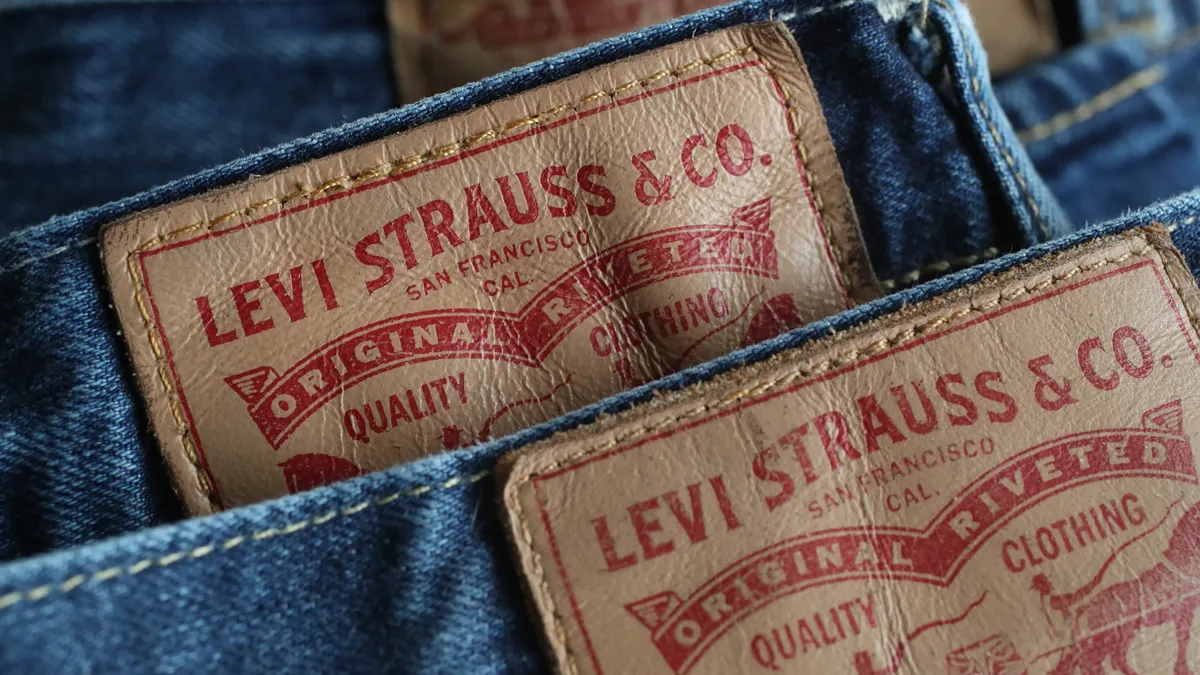Dive Brief:
- Levi Strauss & Co. announced Wednesday it will begin using models generated by artificial intelligence on its e-commerce channels later this year in an effort to expand their diversity and improve customers’ online experience.
- The company said it plans to use the AI models to supplement its human models. The AI models are meant to create “a more diverse and inclusive customer experience,” Amy Gershkoff Bolles, the company’s global head of digital and emerging technology strategy, said in a statement.
- The company is partnering with digital AI studio LaLaLand.ai on the project. Levi Strauss & Co. — which owns Levi’s, Dockers and Beyond Yoga — said it is also continuing to diversify its human models in terms of age, size, body type and skin color.
Dive Insight:
Fashion companies from Prada to Puma have used virtual models to front campaigns before, but the Levi’s move to use hyper-realistic AI models to increase diversity may raise eyebrows. Underrepresented groups have historically been excluded from modeling, and it’s not clear how using AI-generated models will affect hiring practices.
Although fall 2022’s fashion month was one of its most racially diverse yet, featuring 48.6% models of color, other types of diversity lagged far behind, according to an analysis from The Fashion Spot. Plus-sized models accounted for just 2.3% of castings, while transgender and nonbinary models made up only 1.3%. Poor age diversity is also pervasive, with models over the age of 50 making up less than 1% of casting.
In a statement Thursday, Levi Strauss & Co. said the company will be able to assess how it will use AI in the future after it collects consumer feedback on the AI-generated models. It expects the AI models could expand the number of models used per product on Levi.com and its app.
Gershkoff Bolles explained the company’s move further during Business of Fashion’s Summit on Technology earlier this week, saying it would be impossible for the company to “have models that cover every combination of race, ethnicity, age, body size, body type,” the publication reported.
For now, Levi Strauss & Co. generally only uses one model for each product, according to its announcement. But other companies have been using multiple models to showcase each item.
That includes Savage X Fenty, which often shows two or three models of different sizes and from different racial and ethnic backgrounds wearing the same apparel. The same is true for Skims, another celebrity-led underwear line. Good American has similarly focused on casting models with different body sizes and from a diversity of backgrounds. And in 2021, Old Navy announced it would show women’s products online on models in sizes four, 12 and 18.
“We are excited about a world where consumers can see more models on our site, potentially reflecting any combination of body type, age, size, race and ethnicity, enabling us to create a more personal and inclusive shopping experience,” Levi Strauss & Co. said in a statement.
However, the company said in its announcement that it doesn’t see AI-generated models as the “sole solution” to improving diversity, equity and inclusion. The company is also “continuing to diversify” its human models so that they can better reflect customers.
















